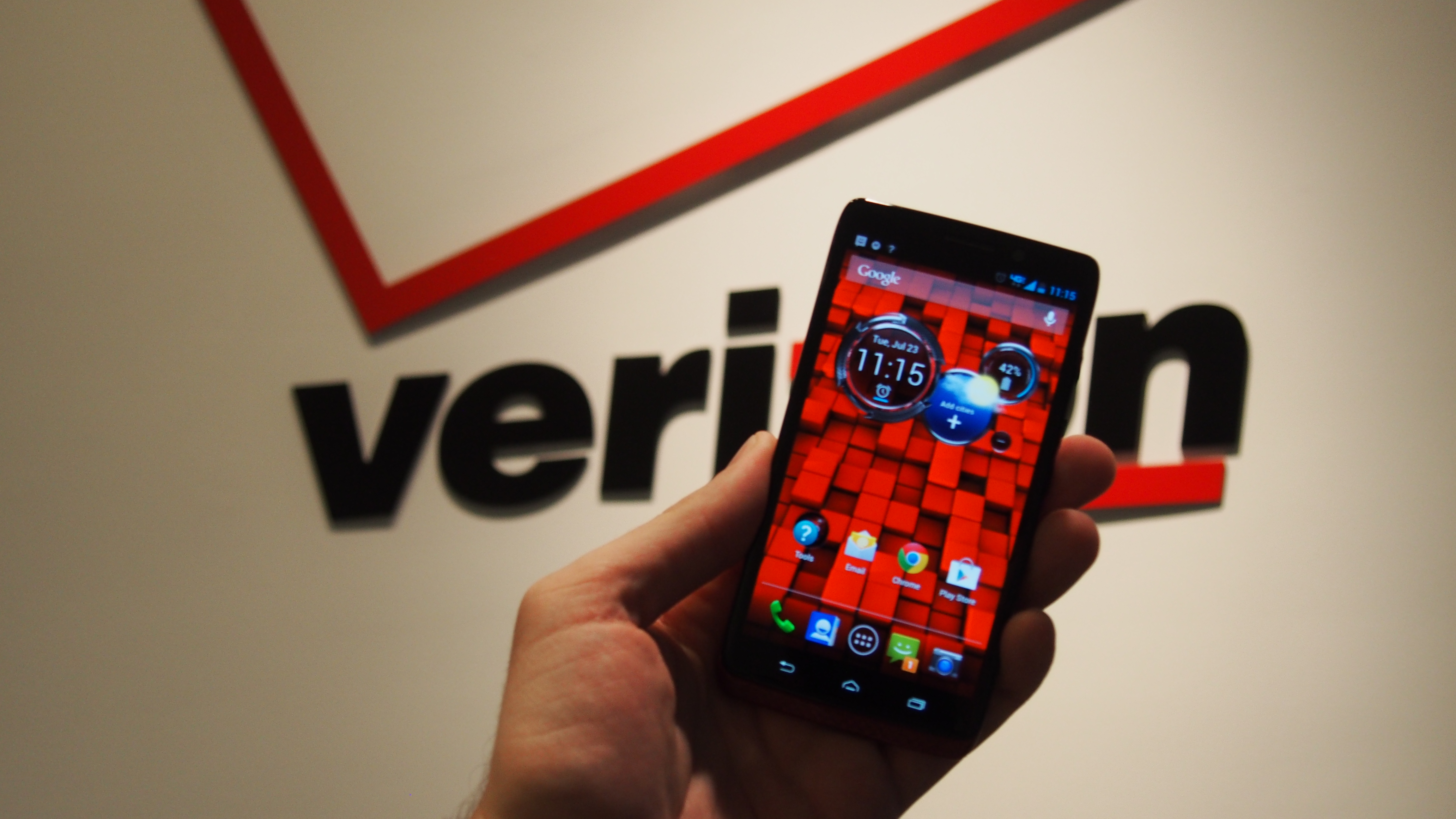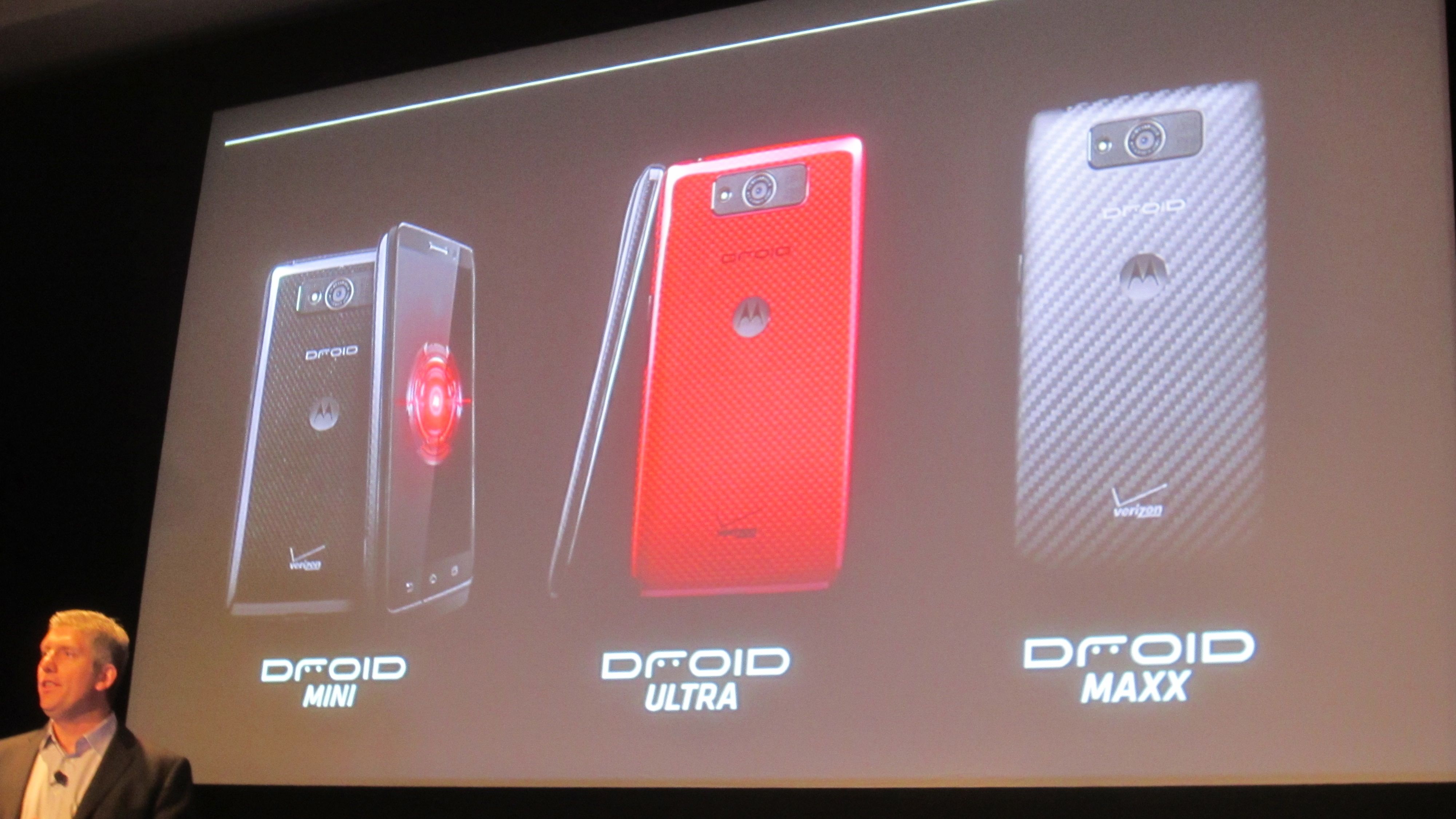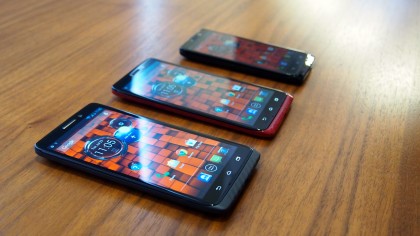Meet the Droid Mini, Droid Ultra, Droid Maxx and 48-hour battery life
New Droids' software is something to consider

U.S. carrier Verizon outed a threesome of next-gen Motorola Droids today during an over-before-it-began press event in New York City.
The new family of phones includes (unsurprisingly) the Droid Mini, Droid Ultra and Droid Maxx. It's important to note that we should see the phones land in international variants, dropping "Droid" along the way, and we'll bring you details on those announcements when available.
But back to Big Red, the Droids were heavily leaked in the days leading up to today's reveal, but now Verzion and bedfellow Motorola have brought the follow ups for its "most popular" line to the fore.
Each offers its own little something, though the similarities between the Ultra and Maxx are more striking. However, Verizon claims the Maxx's 3,500mAh battery can last up to 48 hours, a ridiculously long time in this day and age.

What's in a Droid?
The Ultra and Maxx are for all intents and purposes replacing the Droid Razr HD and Droid Razr Maxx HD.
Both phones are said to come with a CPU speed that's boosted by 24 percent, while the GPU speed is up by 100 percent. The increases are due to a new Motorola X8 SoC, a chip that's Moto made.
Lumped within this "eight-core" chip are four GPU processors, two processors for running apps, one for contextual computing, and one devoted solely to language processing.
Get daily insight, inspiration and deals in your inbox
Sign up for breaking news, reviews, opinion, top tech deals, and more.
All three devices have come with a dual-core 1.2GHz Snapdragon processor and 2GB of RAM.
With the Ultra, users will get a 7.18mm phone that's home to a 5-inch, 1280 x 720 screen. The Kevlar back is back, and it's also molded into the 8.5mm thin Maxx and Mini. Verizon's painted the Ultra racecar red, while the other two are a more subdued black. If you're not feeling fuego, the Ultra is available in black as well.
The Mini houses a 4.3-inch, edge-to-edge display. It and the Ultra are available with 16GB while the Maxx tops out at 32GB in storage. None have microSD support.
Curious about the OS? Try Android 4.2.2 on for size.

Droid-y features
Moto's stuck a 10MP camera in the back of all three and a 2MP on the front. Ho-hum, but there's also a camera function called Quick Capture that lets owners take a 10MP snap by shaking their phone twice, then tapping anywhere on the screen to take a picture.
With Droid Zap, users can share a pic with a nearby Droid by swiping up on the photo, and a swipe downward will let them receive one.
There's also an always-on Google Now functionality baked into each phone, meaning you can shout "OK Google Now" and utter commands without ever touching your device. If you misplace your Droid, you can holler, "Find my Droid," and your phone will start ringing if it's within earshot.
Importantly, the phone learns what the sound of your voice so it can pick it up in a room full of chatter, though some more rigorous real world testing is needed to see if this is the real deal.
In further keeping with their futuristic name, the new Droids come with Touchless Controls and Active Display that lets users stay hands free yet still make calls, send texts, get directions, play music, set a reminder and preview notifications without having to unlock the device or without draining extra battery.
Are these features we could see in the Moto X? Sounds mighty likely.
The Droids are up for pre-order right now and will become available Aug. 20. Pricing for the machines runs $99 (about £64, AU$107) for the Mini, $199 (about £129, AU$215) for the Ultra and $299 (about £194, AU$323) for the Maxx. A two-year contract is of course part of the package.
- New devices abound, including a new(er) Lumia
Michelle was previously a news editor at TechRadar, leading consumer tech news and reviews. Michelle is now a Content Strategist at Facebook. A versatile, highly effective content writer and skilled editor with a keen eye for detail, Michelle is a collaborative problem solver and covered everything from smartwatches and microprocessors to VR and self-driving cars.
